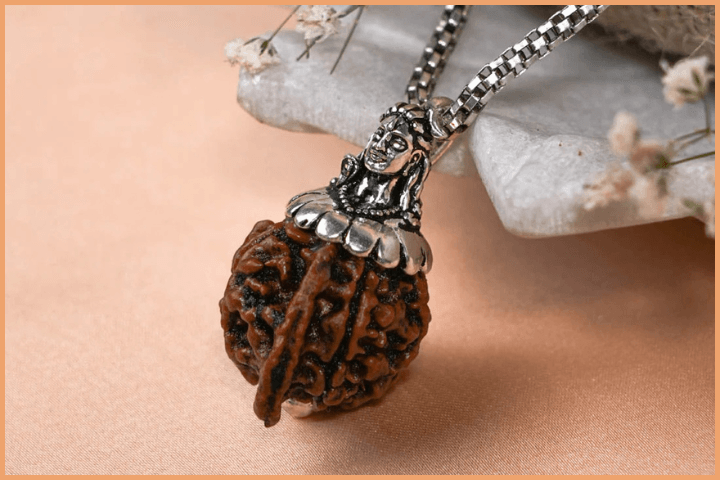Rudraksha and Bhadraksha are sacred beads deeply rooted in spirituality and Hindu traditions. While they may seem similar at first glance, their differences are significant in terms of origin, appearance, and benefits. This article will explain these differences in a straightforward way.
What is Rudraksha?

The word Rudraksha is a combination of two Sanskrit terms: Rudra, which refers to Lord Shiva, and Aksha, meaning tears. According to ancient beliefs, Rudraksha beads are formed from Lord Shiva’s tears, making them highly revered and sacred.
Key Features of Rudraksha:
- Origin: Found mainly in Nepal, Indonesia, and India.
- Appearance: Rudraksha beads are spherical with natural holes and sharp ridges.
- Mukhis (Faces): Each bead has lines or ridges called Mukhis, which range from 1 to 21. Each Mukhi has unique spiritual and health benefits.
- Example: A 5 Mukhi Rudraksha is believed to regulate blood pressure and promote peace.
- Healing Vibrations: Authentic Rudraksha beads are said to emit subtle vibrations that help in meditation, healing, and spiritual growth.
- Scientific Backing: Studies suggest that Rudraksha beads can reduce stress and enhance overall well-being.
What is Bhadraksha?

Bhadraksha is another type of bead often mistaken for Rudraksha. However, it differs significantly in origin and properties.
Key Features of Bhadraksha:
- Origin: Found in South India, Sri Lanka, and parts of Southeast Asia.
- Appearance:
- Crescent moon or oval-shaped.
- Lighter in weight with fewer or no natural holes.
- Smoother and less sharp ridges compared to Rudraksha.
- Symbolism: Associated with Goddess Kali, Bhadraksha is often used for religious purposes like chanting (Japa).
- Medicinal Use: While it has some medicinal applications, it does not match the spiritual potency of Rudraksha.
Main Differences Between Rudraksha and Bhadraksha

| Feature | Rudraksha | Bhadraksha |
|---|---|---|
| Origin | Nepal, Indonesia, India | South India, Sri Lanka |
| Shape | Spherical with natural holes | Crescent or oval-shaped |
| Weight | Heavier | Lighter |
| Ridges | Sharp and rough | Smooth and less pronounced |
| Spiritual Benefits | Strong healing and protective powers | Limited to general positivity |
| Associated Deity | Lord Shiva | Goddess Kali |
| Vibrations | Emits healing vibrations | Does not emit vibrations |
How to Identify Authentic Rudraksha
1. Water Test: Genuine Rudraksha beads sink in water while Bhadraksha floats.
2. Natural Hole: Rudraksha beads have a natural central hole, whereas Bhadraksha may require drilling.
3. Surface Texture: Check for sharper ridges on Rudraksha.
4. Vibrations: Place the bead in your palm; authentic Rudraksha produces subtle energy.
Which is Better: Rudraksha or Bhadraksha?
While Bhadraksha holds some cultural and medicinal value, Rudraksha is far superior in terms of spiritual significance and healing benefits. It has been used for centuries by saints and devotees for meditation, protection, and overall well-being.
If you seek spiritual growth, stress relief, or a deeper connection with divine energy, Rudraksha is the ideal choice.
Final Thoughts
Both Rudraksha and Bhadraksha have their unique identities and uses. However, Rudraksha stands out for its remarkable spiritual and healing qualities. Always ensure you purchase authentic beads from a trusted source to experience their true benefits.
By recognizing these differences, you can make a well-informed choice that suits your spiritual and personal requirements.

